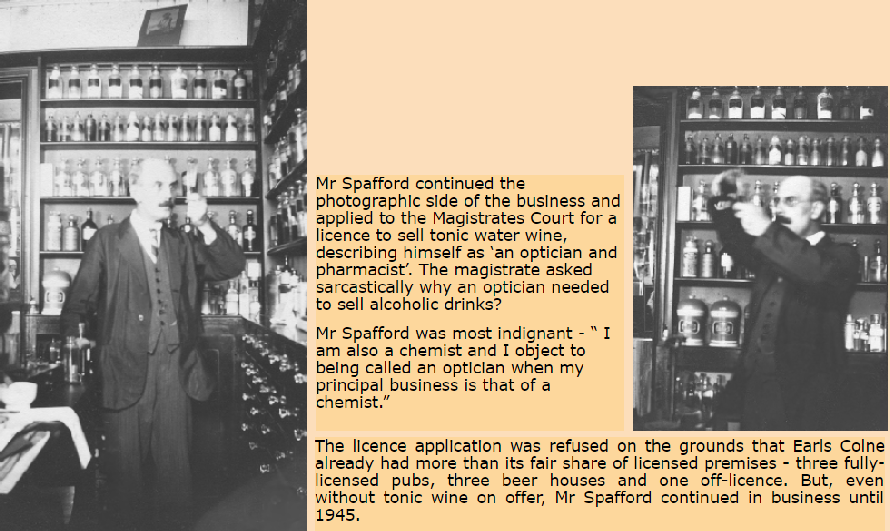Lower High Street
An exhibition showing changes to village shops and houses over the last 150 years
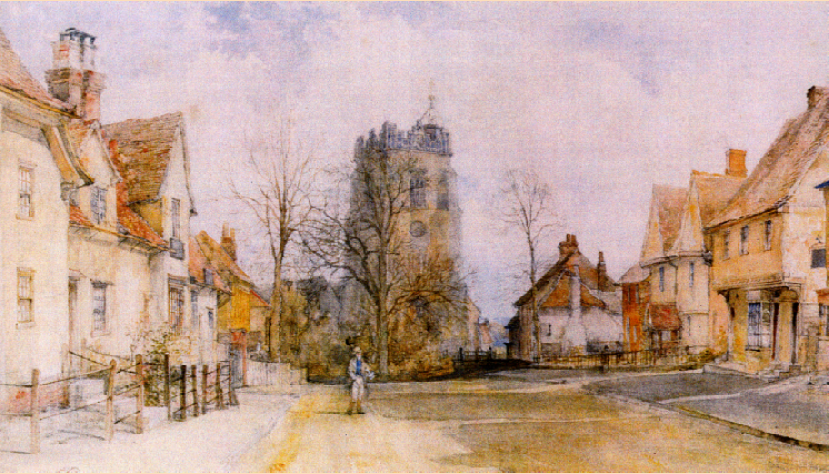 Major John Bale painted the lower part of the High Street in 1894.
Major John Bale painted the lower part of the High Street in 1894.
The general view is much the same today, but there have been some changes.
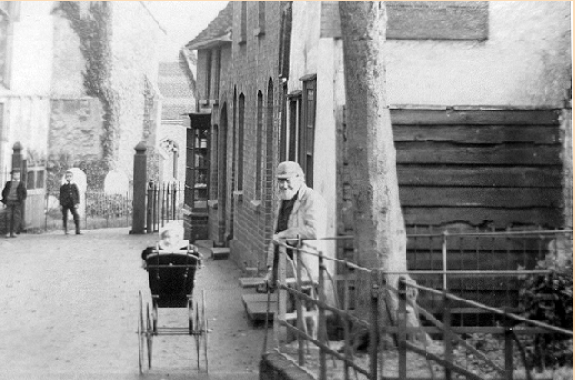
Looking from the corner of Shut Lane, we can see the entrance to the churchyard before the lych gate was moved there in 1943.
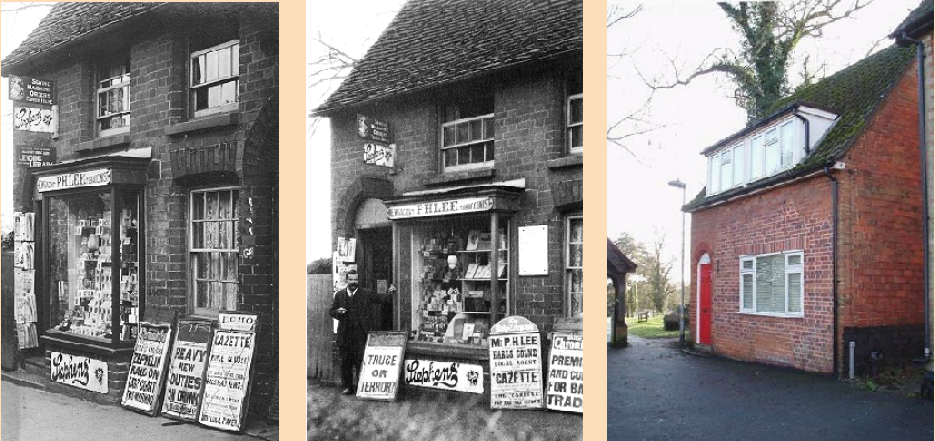
1915 – 2009
To the right of the churchyard gate was a newsagent’s shop. From the headlines on the placards we can date this photograph to 14th April 1915.
The proprietor, Philip Lee, standing by the doorway, won prizes for his window display.
The Hughes family took over the shop in 1925 and moved the business to the top of the High Street in the mid-1950s
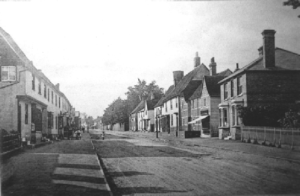

In the left-hand picture, looking west from the corner of Shut Lane, the shop on the right with the sun-blind has been through more changes than most – from coal-merchant’s to a dairy, then a handicraft business and now a private residence.
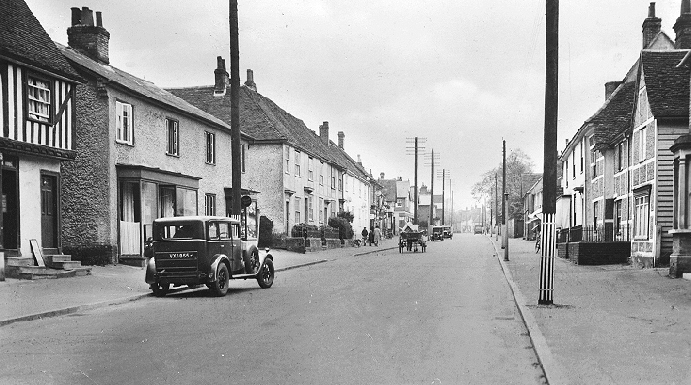
By the 1930s there are a few cars in the High Street but one roundsman is still making deliveries by horse and cart.

Although ‘The Castle’ is one of the oldest buildings in the High Street, it only became a public house towards the end of the nineteenth century. The plaque over the fireplace dates from the seventeenth century when the house was owned by Robert Abbott, a leading member of the Quakers.
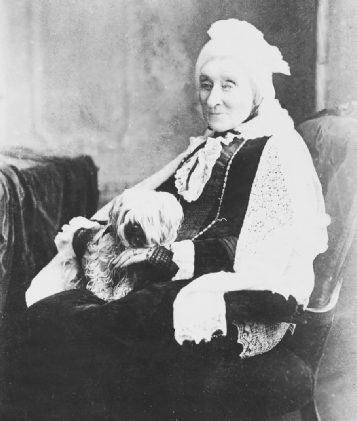
After ‘The Castle’ became a pub, its landlady was Miss Jane Sadd, whose father had previously used the building as a bakery for making biscuits. This portrait taken by Charles Tyler, shows that she continued to wear the Victorian style of dress well into the twentieth century.
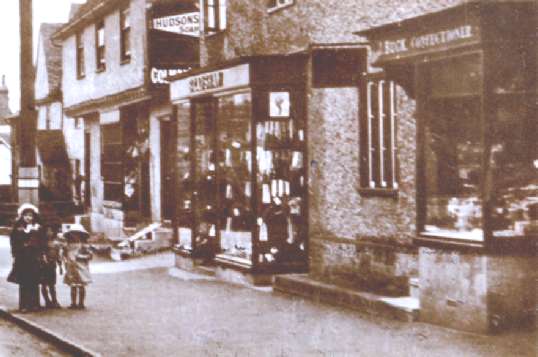
Across the road from ‘The Castle’ were Jessie Buck’s sweet shop and Bradshaw’s gentlemen’s outfitters. Beyond Bradshaw’s was Bartholomew’s grocery shop.
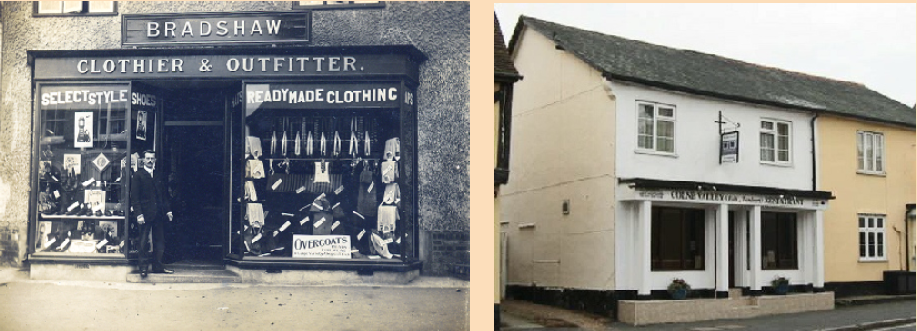
As Bradshaw’s was in competition with Joseph Farrant’s drapery business further up the road, it doesn’t seem top have been in existence for very long. The building became a craft shop in the 1960s and is now the Colne Valley Tandoori Restaurant.
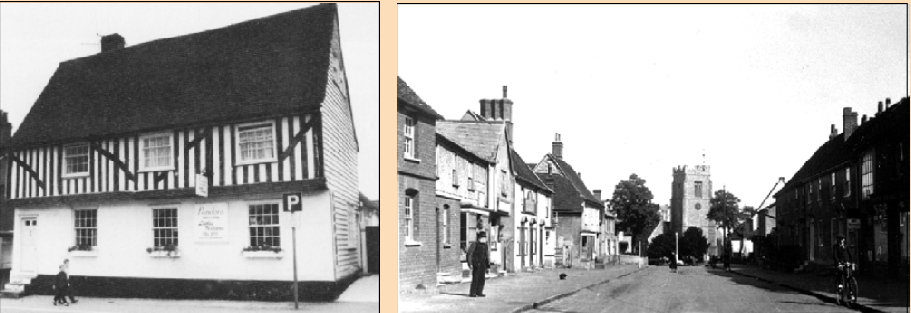
Bartholomew’s grocery store had its display window and front steps removed when it was converted into a dress shop. On the north side of the High Street in 1932, we can see Miss Pendle’s haberdashery. Beyond that are Miller’s fish shop, ‘The Castle’ pub and Leeland’s greengrocery business.

Leeland’s also sold sweets and ice cream in the 1950s, and is now a private residence.
John Stedman recalls:
“You entered the shop via a narrow doorway, above which was a bell that rang quite loudly, and walked on bare floorboards. The counter was on the right as you entered. Behind were shelves with rows of sweet jars and in front, quite low, was a display of all sorts which delighted the children -liquorice boot-laces, white mice, flying saucers, love hearts, gob-stoppers, aniseed balls, sherbert dabs, jamboree bags, Trebor chews for a farthing and many more, often making it hard for a
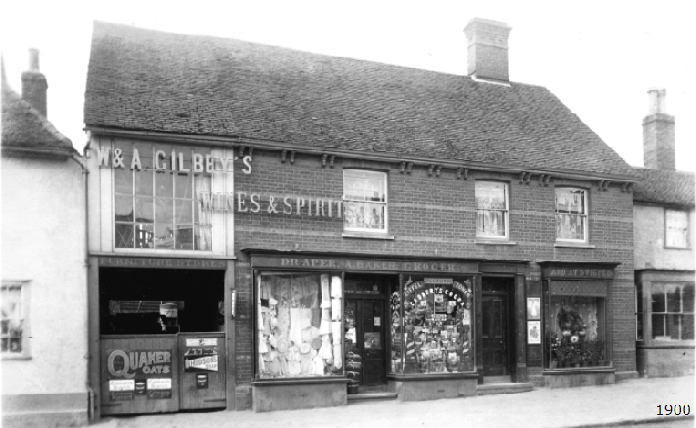
Before it was taken over by Joe Gage and his son, as a garage and taxi-hire business, Mr Baker’s store sole a wide range of goods including furniture, drapery, groceries and wine and spirits.

As well as his taxi service, Joe Gage sold bicycles.
Evelyn Smith, at the age of 96, could remember buying her first cycle there when she was fourteen and had already started work:
“Ooh”, I said, “Mr Gage, that lovely cycle there. I wish I could have it!” He said “If you can’t afford to pay for it, you’re earning a little money now. If you bring a little money in every week, I’ll keep it for you.” Well, I was getting ever so excited . I said to my mother, “ It’s my last money I’ve got to pay out.” When I went he said, “Well, you’ve been a very good girl. I’ll let you off this week.” He said, “ You can take the bike home.” I was too excited to ride it home, I had to push it home.
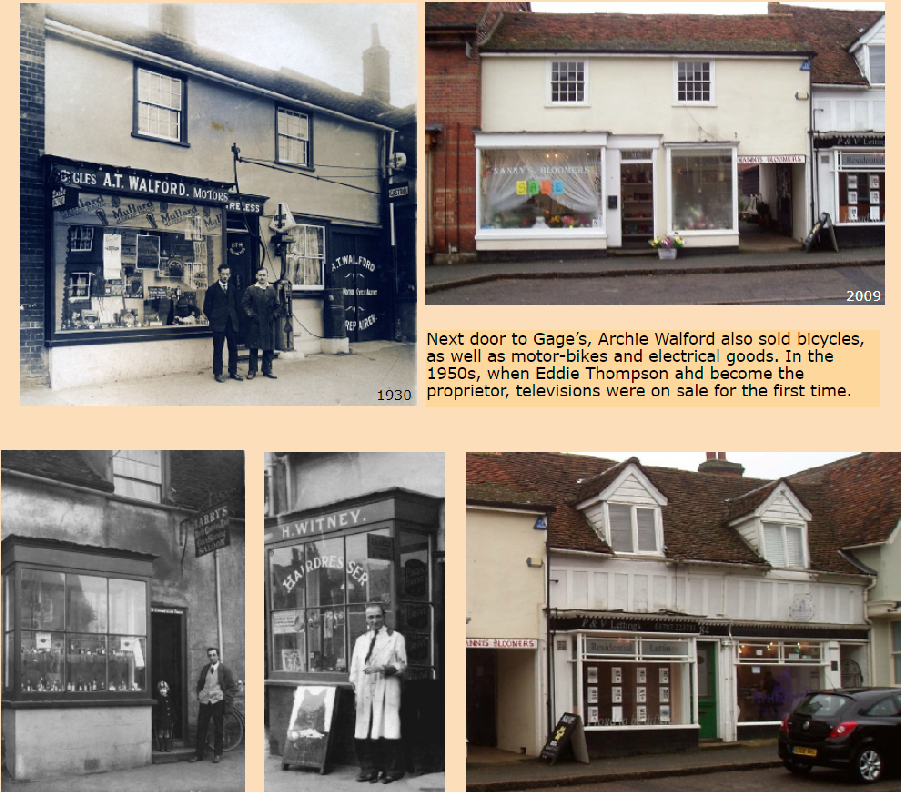
1923 – 1930’s – 2009
James Barry’s name was still above the door of his barber’s shop when its new owner, Hector Witney, took it over in 1923. Hector later opened a ladies’ saloon next door and his son, Frank, carried on the business after his father retired.
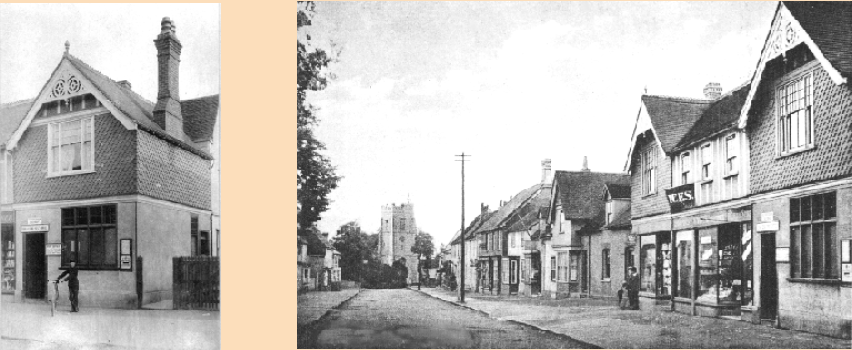
The Post Office moved to its purpose- built premises in 1901. I this picture, the post box still displays Queen Victoria’s monogram.
A wider view shows the adjoining shops – Cuthbert’s for sweets and a drapery shop run by the Misses Dale and Whiting. Evelyn Smith assisted in the drapery shop when she first left school. One of her less pleasant duties was collecting money from customers who were slow to pay for their goods.
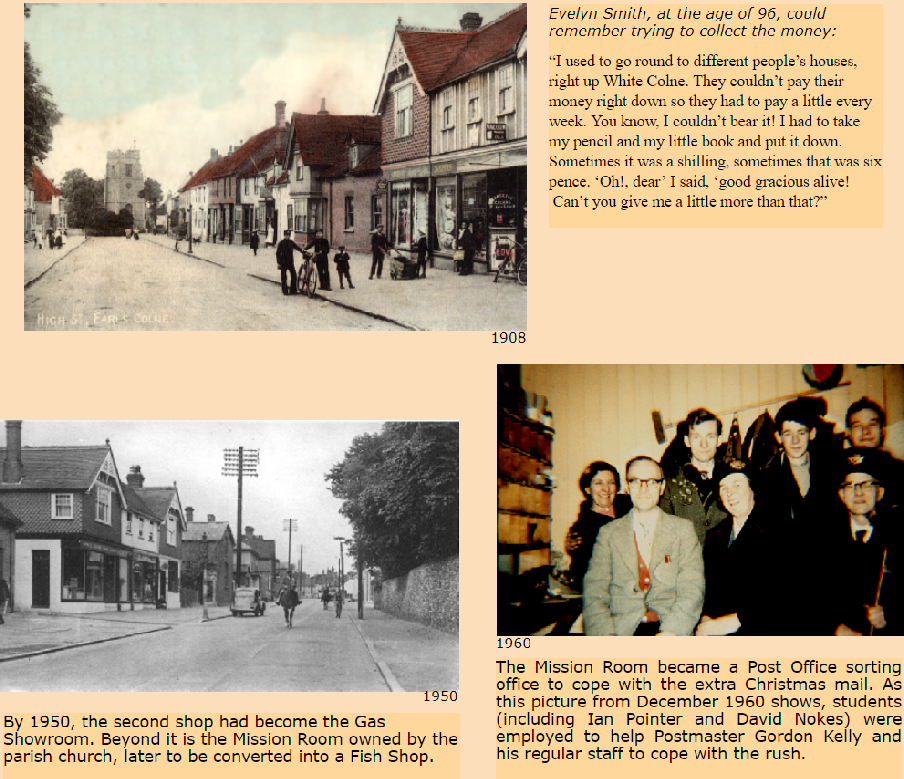
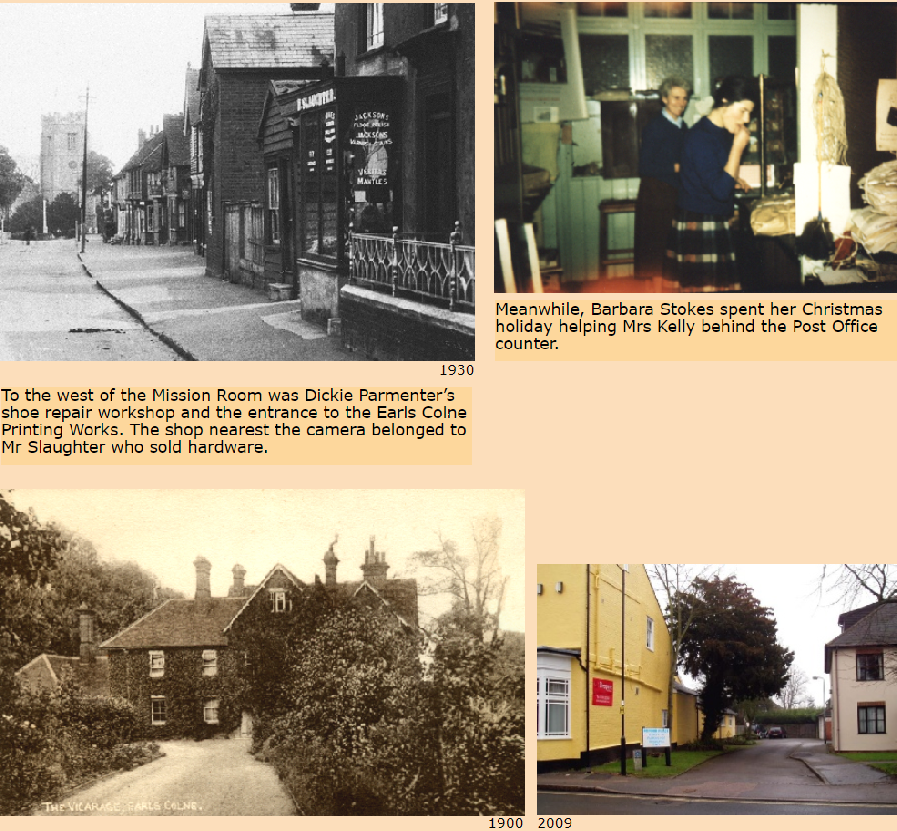 Opposite the Post Office, a driveway led to the former Vicarage. The parsonage house became a private residence in 1956 and was demolished in 1980 to provide the site for the Monks Road and Josselin Close development.
Opposite the Post Office, a driveway led to the former Vicarage. The parsonage house became a private residence in 1956 and was demolished in 1980 to provide the site for the Monks Road and Josselin Close development.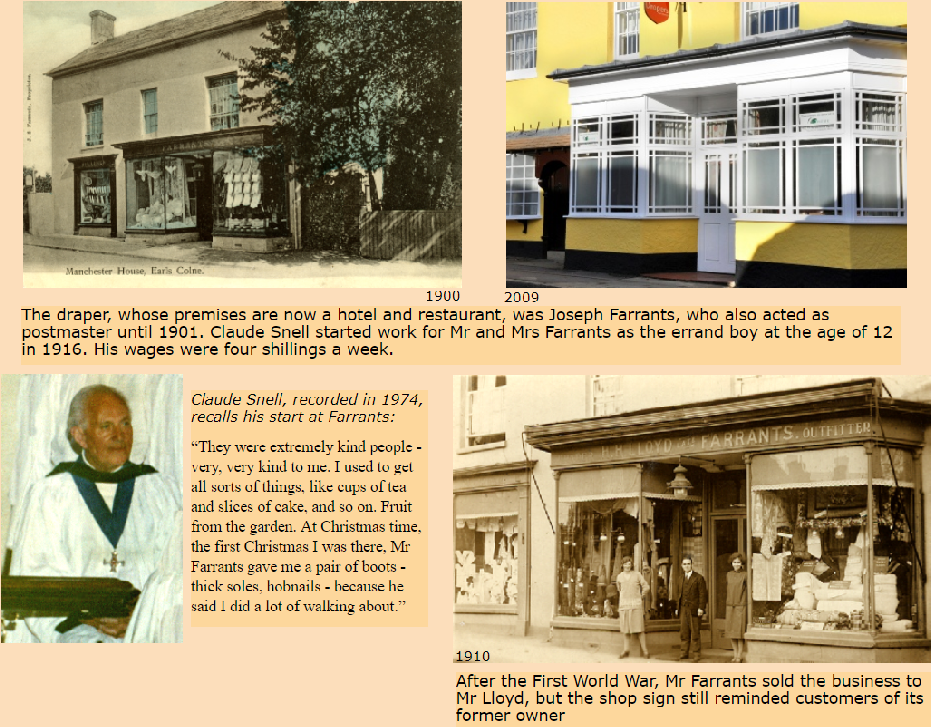
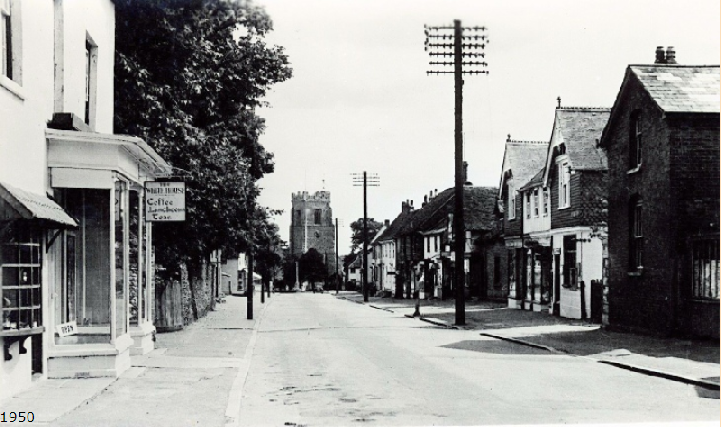
The same building went through several transformations in subsequent decades. In the 1950s, it became ‘The White House’ tea rooms and then the showrooms of Charles Morse’s antiques.
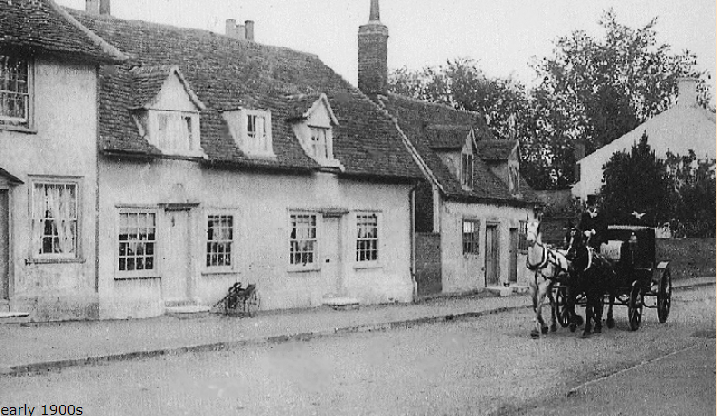
The row of small cottages leading to Queens Road have also undergone changes since this picture was taken in the early years of the twentieth century. A horse-drawn hearse is making its solemn way up the street.
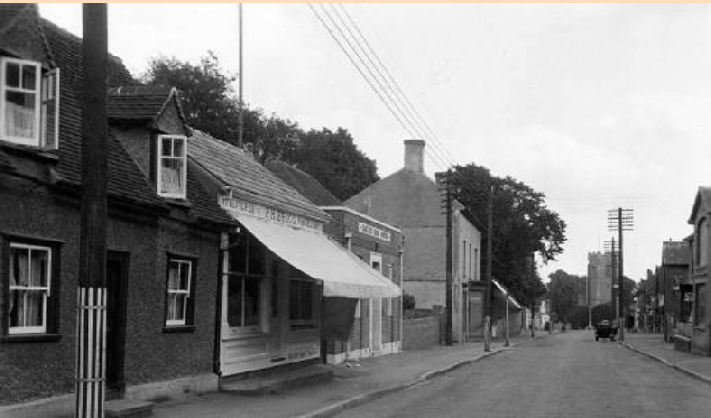
Looking from the west in 1950, we can see the addition of Percy Bragg’s fish shop with the sun-blind and, beyond it Barclays Bank, purpose-built in 1931.
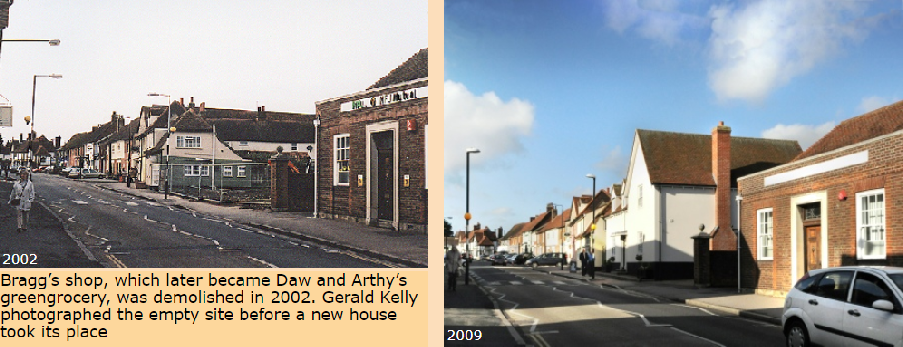
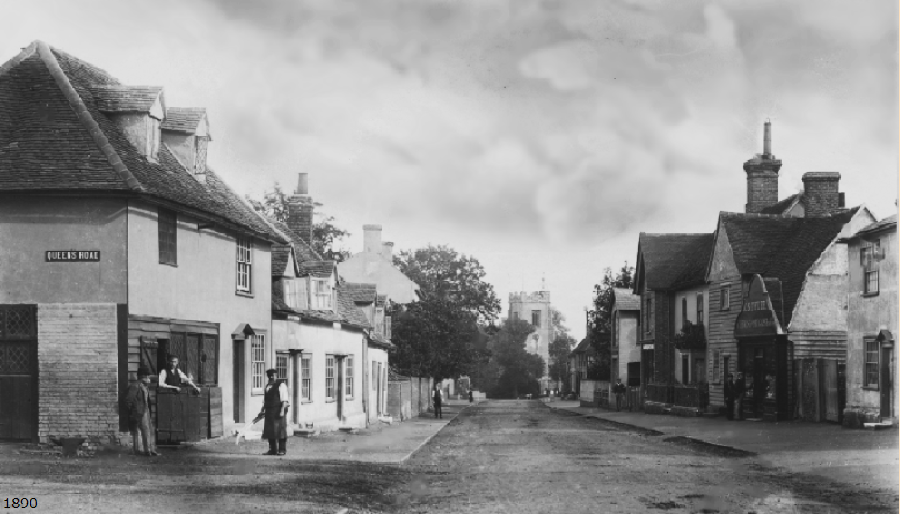
Charles Tyler’s clearest view of the lower High Street was taken in 1890 and shows his pharmacy in the right just before it was rebuilt.
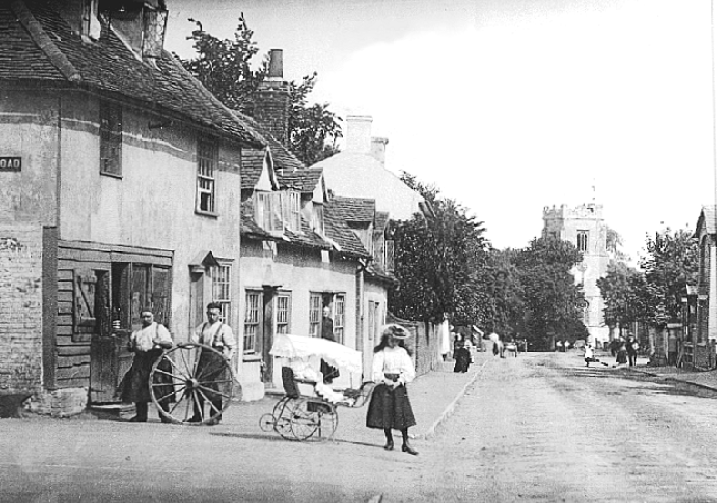
As Mr Tyler’s shop was opposite the Forge on the corner of Queens Road, it is not surprising that many of his photographs feature activities there.
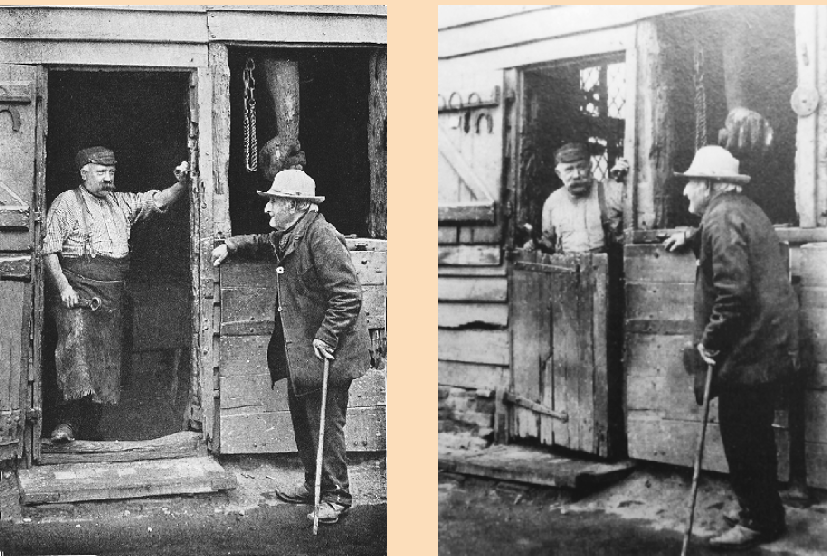
Mr Tyler’s best-known portrait of Bill James the blacksmith has appeared in several national publications. As the second picture shows, he tried different angles before deciding on the best composition.

Looking past the Forge, his view of Queens Road shows water pipes being laid to a communal storage tank, connected to the well at the Atlas Works.
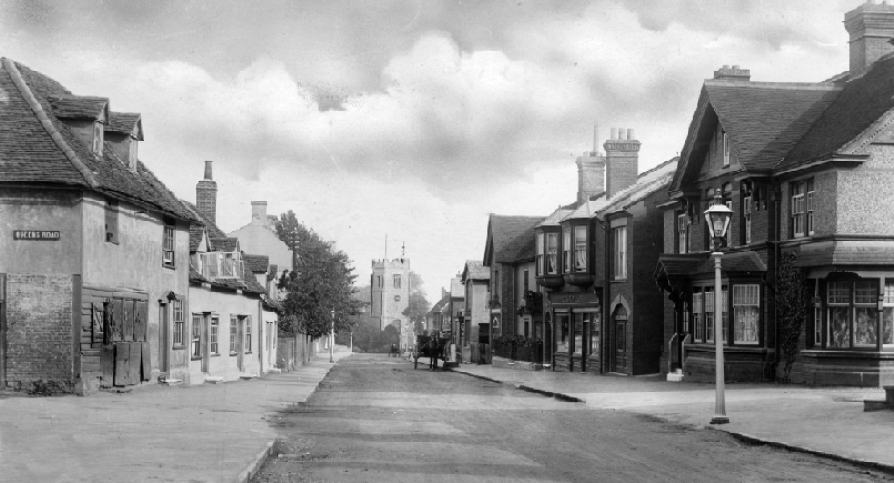
One of Charles Tyler’s last view of the High Street was taken in 1907, showing his re-
